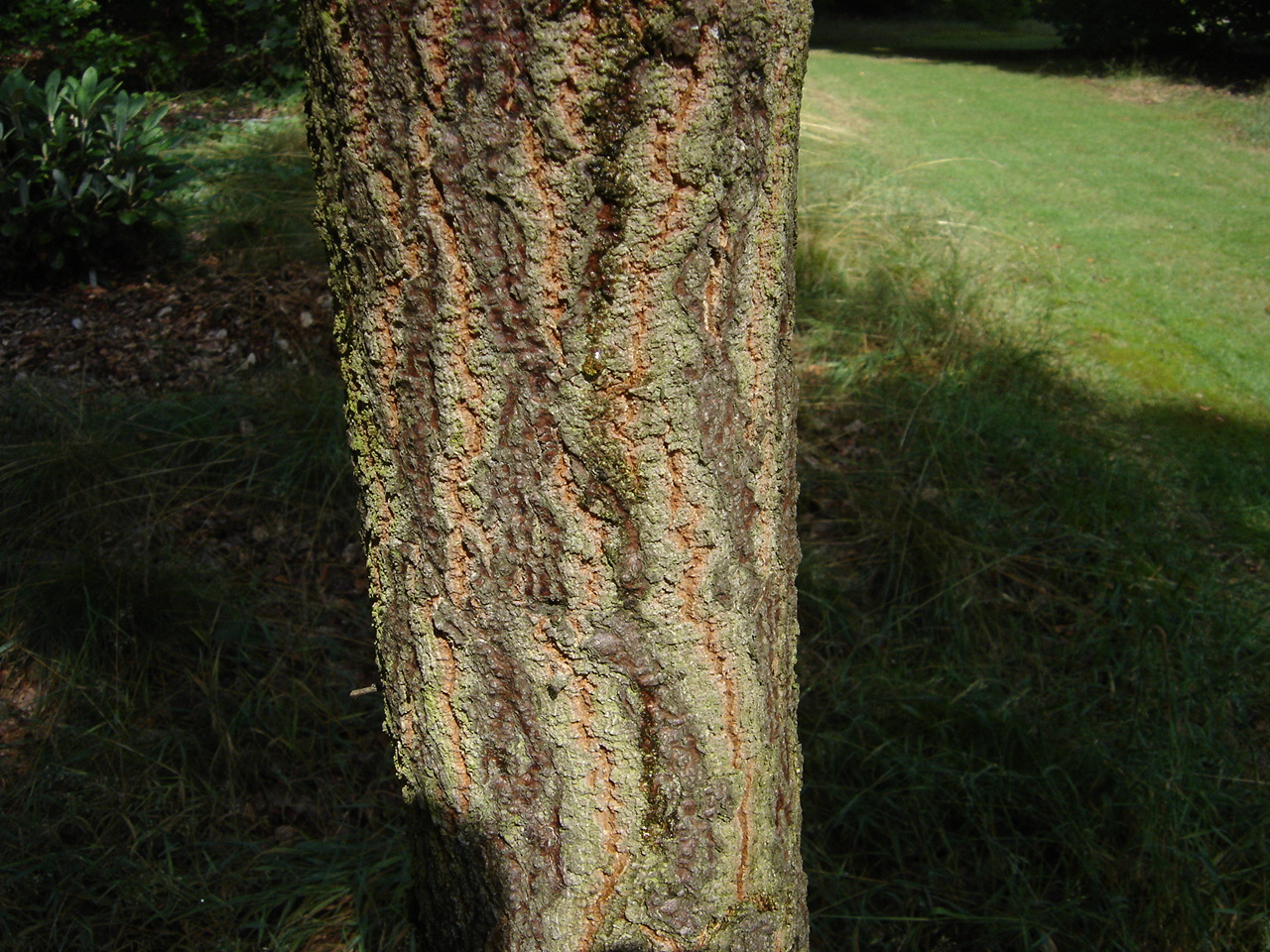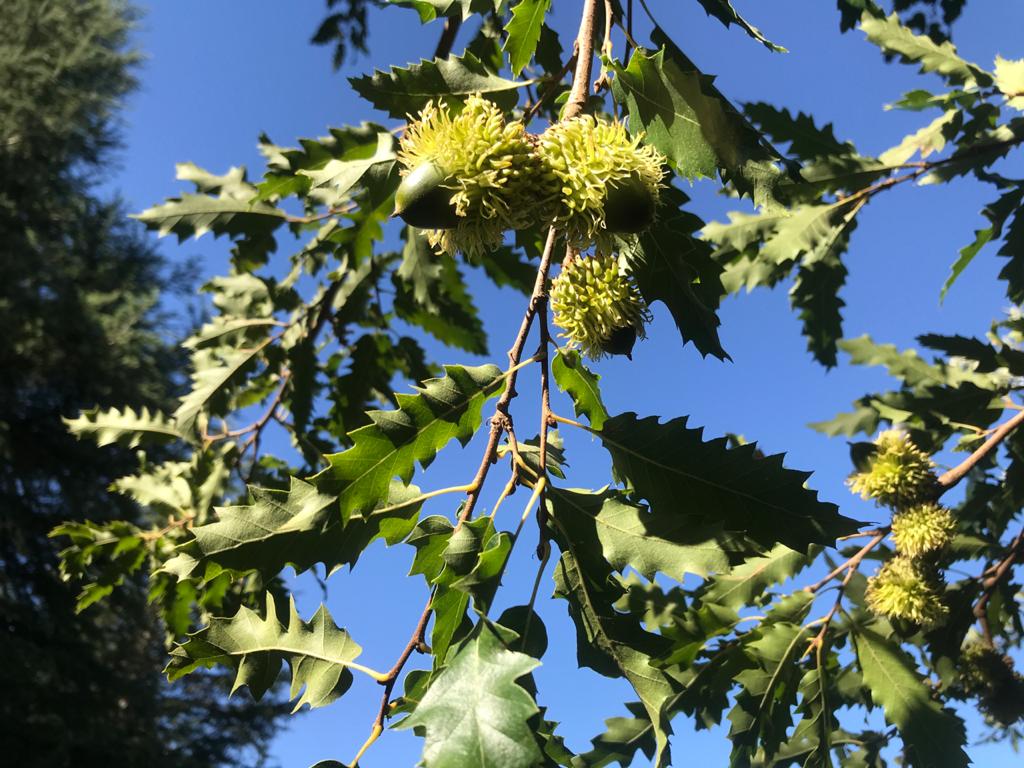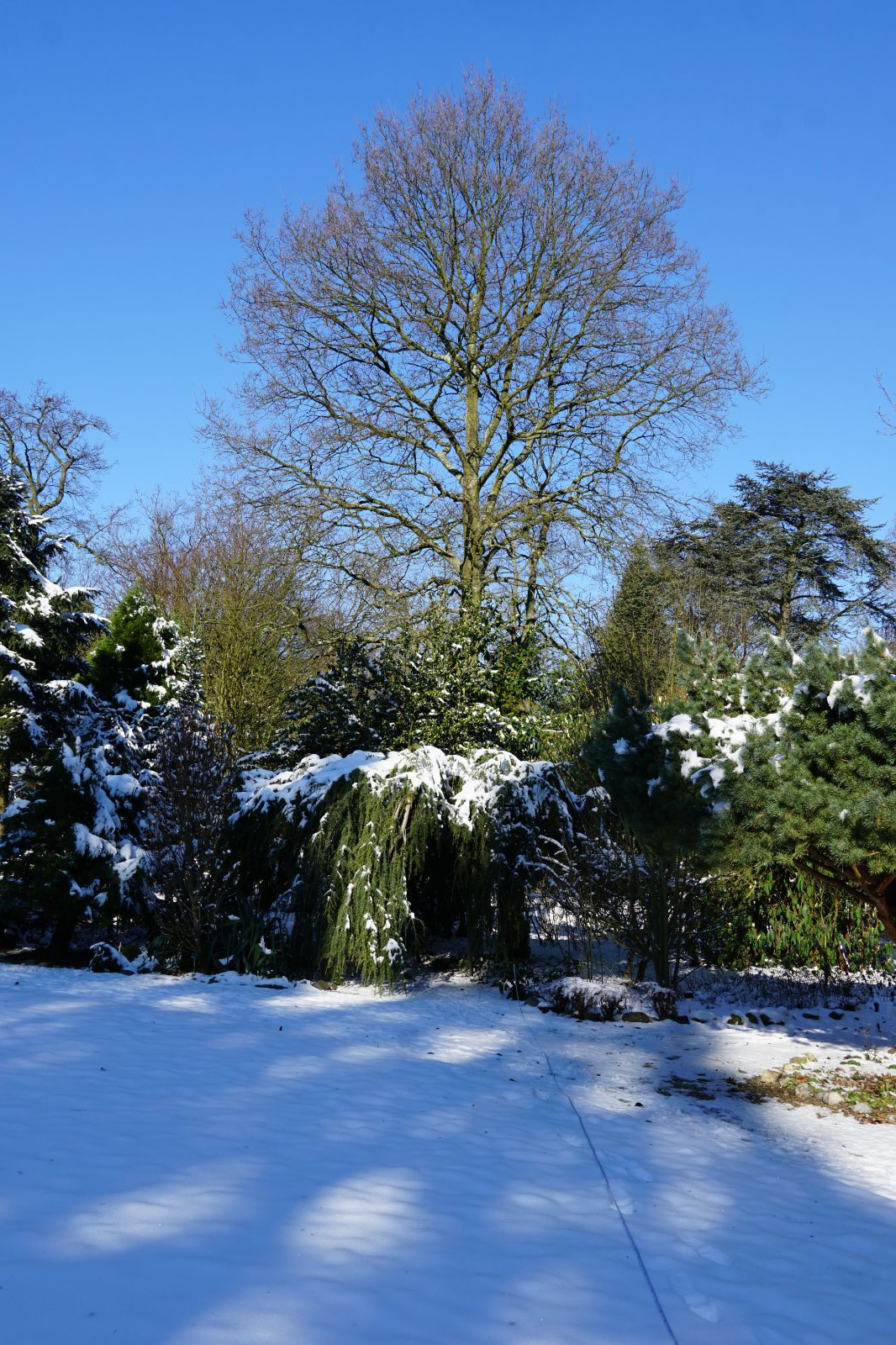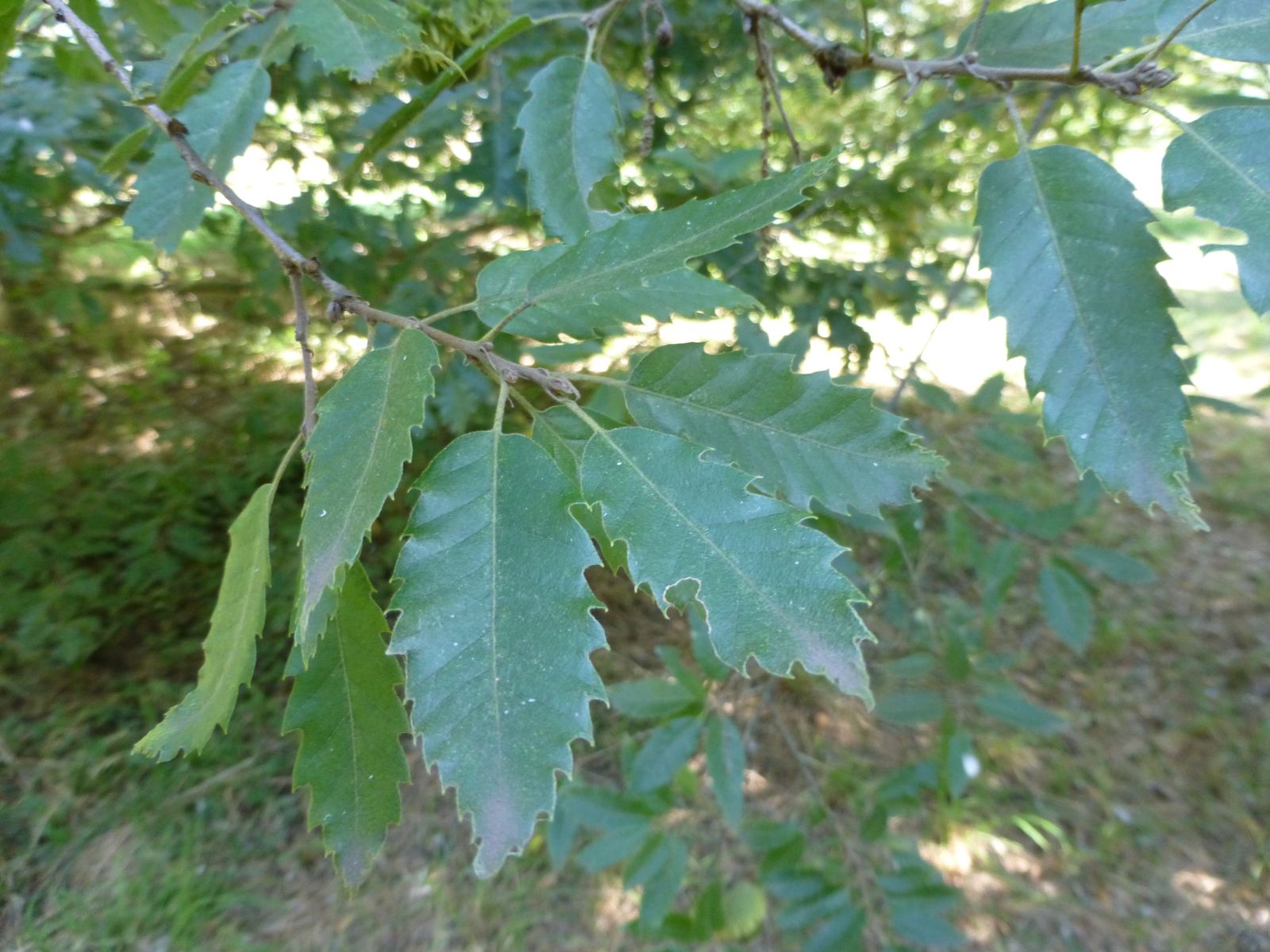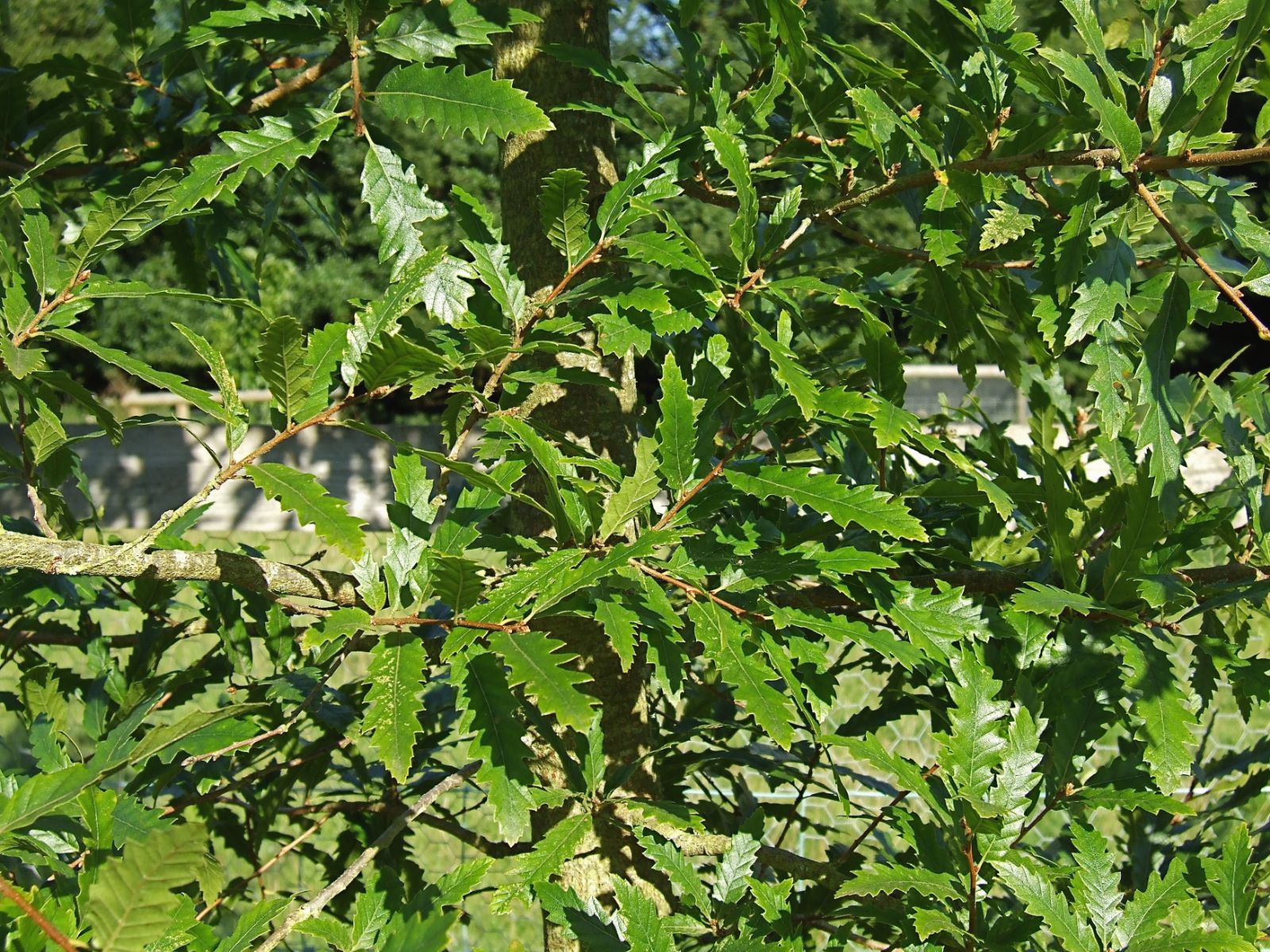Quercus × libanerris
Sponsor
Kindly sponsored by
The Trees and Shrubs Online Oak Consortium
Credits
Authors Allen Coombes & Roderick Cameron (2021)
Recommended citation
Coombes, A. & Cameron, R. (2021), 'Quercus × libanerris' from the website Trees and Shrubs Online (treesandshrubsonline.
Genus
- Quercus
- Subgen. Cerris, Sect. Cerris
Infraspecifics
Other taxa in genus
- Quercus acerifolia
- Quercus acherdophylla
- Quercus acrodonta
- Quercus acuta
- Quercus acutifolia
- Quercus acutissima
- Quercus afares
- Quercus affinis
- Quercus agrifolia
- Quercus alba
- Quercus aliena
- Quercus alnifolia
- Quercus aquifolioides
- Quercus arizonica
- Quercus arkansana
- Quercus aucheri
- Quercus augustini
- Quercus austrina
- Quercus × auzendei
- Quercus baloot
- Quercus bambusifolia
- Quercus baronii
- Quercus bicolor
- Quercus brantii
- Quercus buckleyi
- Quercus canariensis
- Quercus canbyi
- Quercus candicans
- Quercus castanea
- Quercus castaneifolia
- Quercus cerris
- Quercus chenii
- Quercus chrysolepis
- Quercus coccifera
- Quercus cocciferoides
- Quercus coccinea
- Quercus conspersa
- Quercus crassifolia
- Quercus crassipes
- Quercus delavayi
- Quercus dentata
- Quercus deserticola
- Quercus dolicholepis
- Quercus douglasii
- Quercus dumosa
- Quercus durifolia
- Quercus eduardii
- Quercus ellipsoidalis
- Quercus emoryi
- Quercus engelmannii
- Quercus engleriana
- Quercus euboica
- Quercus eugeniifolia
- Quercus fabri
- Quercus faginea
- Quercus falcata
- Quercus floribunda
- Quercus frainetto
- Quercus franchetii
- Quercus fruticosa
- Quercus fusiformis
- Quercus gambelii
- Quercus garryana
- Quercus geminata
- Quercus georgiana
- Quercus germana
- Quercus gilliana
- Quercus gilva
- Quercus glabrescens
- Quercus glauca
- Quercus graciliformis
- Quercus gravesii
- Quercus griffithii
- Quercus grisea
- Quercus guyavifolia
- Quercus hartwissiana
- Quercus hemisphaerica
- Quercus × hispanica
- Quercus hondae
- Quercus hypargyrea
- Quercus hypoleucoides
- Quercus ilex
- Quercus ilicifolia
- Quercus imbricaria
- Quercus incana
- Quercus infectoria
- Quercus insignis
- Quercus ithaburensis
- Quercus kelloggii
- Quercus × kewensis
- Quercus kiukiangensis
- Quercus laceyi
- Quercus laevis
- Quercus lamellosa
- Quercus lanata
- Quercus lancifolia
- Quercus laurifolia
- Quercus laurina
- Quercus × leana
- Quercus leucotrichophora
- Quercus libani
- Quercus lobata
- Quercus lobbii
- Quercus lodicosa
- Quercus longinux
- Quercus longispica
- Quercus look
- Quercus × ludoviciana
- Quercus macranthera
- Quercus macrocalyx
- Quercus macrocarpa
- Quercus macrolepis
- Quercus marilandica
- Quercus mexicana
- Quercus michauxii
- Quercus mongolica
- Quercus monimotricha
- Quercus montana
- Quercus morii
- Quercus muehlenbergii
- Quercus myrsinifolia
- Quercus myrtifolia
- Quercus nigra
- Quercus × numidica
- Quercus oblongifolia
- Quercus obtusata
- Quercus oglethorpensis
- Quercus oxyodon
- Quercus pagoda
- Quercus palmeri
- Quercus palustris
- Quercus pannosa
- Quercus parvula
- Quercus petraea
- Quercus phellos
- Quercus phillyreoides
- Quercus planipocula
- Quercus poilanei
- Quercus polymorpha
- Quercus pontica
- Quercus prinoides
- Quercus pubescens
- Quercus pyrenaica
- Quercus rehderiana
- Quercus reticulata
- Quercus robur
- Quercus rotundifolia
- Quercus rubra
- Quercus rugosa
- Quercus rysophylla
- Quercus sadleriana
- Quercus salicina
- Quercus sartorii
- Quercus × schneideri
- Quercus schottkyana
- Quercus semecarpifolia
- Quercus senescens
- Quercus serrata
- Quercus sessilifolia
- Quercus setulosa
- Quercus shumardii
- Quercus sinuata
- Quercus spinosa
- Quercus stellata
- Quercus stenophylloides
- Quercus suber
- Quercus subspathulata
- Quercus tarokoensis
- Quercus tatakaensis
- Quercus texana
- Quercus tomentella
- Quercus trojana
- Quercus tungmaiensis
- Quercus turbinella
- Quercus × turneri
- Quercus undulata
- Quercus utahensis
- Quercus utilis
- Quercus uxoris
- Quercus variabilis
- Quercus velutina
- Quercus virginiana
- Quercus vulcanica
- Quercus warburgii
- Quercus wislizenii
- Quercus xalapensis
Quercus cerris × Q. libani. Tree to 20 m tall or more, bark grey-brown, fissured into vertical ridges, young shoots sparsely hairy becoming nearly glabrous, stipules sometimes persistent around the terminal buds. Leaves deciduous, oblong-lanceolate to ovate-lanceolate, to 13 × 5 cm, pointed to blunt at the apex, tapered to rounded at the base. Margin with up to 14 bristle-tipped teeth on each side, sometimes irregularly lobed and showing more influence of Q. cerris. They are glossy green and smooth above when mature, sparsely hairy beneath at least when young. Petiole to 2 cm long. Cupules hemispherical, to 3 cm long and 5 cm across, covered with slender, recurved scales. Acorns ovoid, to 3 cm or more long, about half enclosed in the cup and ripening the second year. (le Hardÿ de Beaulieu & Lamant 2010).
Distribution
USDA Hardiness Zone 6
RHS Hardiness Rating H7
Conservation status Not evaluated (NE)
This hybrid is considered to occur in the wild in Turkey where the parents grow together (Hedge & Yaltirik 1994). A specimen collected from Akher Dagh, Maraş (now Kahramanmaraş) Province by E.K. Balls in 1934 was identified as a hybrid of Q. cerris and Q. libani (Kasapligil 1981). However, examination of this specimen (Balls 994) in the Edinburgh herbarium shows that it is identical to Q. libani var. pinnata, a cut-leaved form described from Nemrut Dağ, SE Turkey, now regarded as a synonym of Q. libani and apparently not in cultivation. Q. × libanerris is mainly distributed as the two cultivars described below, but seedlings are also grown under this name and the hybrid can arise when Q. libani is grown from seed where Q. cerris is also present.
Dr. B.K. Boom named the hybrid based on specimens in cultivation in the Netherlands resulting from crossings performed by J.R.P. van Hoey Smith in Rotterdam, dating to 1940. The tree Boom used as a type for the hybrid was at the nursery of P. Lombarts in Zundert; the source of the seed is likely to have been a Q. libani planted in Trompenburg in 1930 (van Hoey Smith 2001). The name was published when Boom described the cultivar ‘Trompenburg’ in 1959 (Boom 1959; 1972). The practice of naming hybrids by combing parts of the names of the parent species was not new, but it seems to have been taken up by van Hoey Smith of Trompenburg, who named oak cultivars following this method.
A tree at Albury Park Garden, Guildford, Surrey, England grown as Q. libani measured 29 m × 96 cm dbh in 2010, but this could be Q. cerris × castaneifolia. Other trees not assigned to a cultivar are at Evenley Wood Garden, Northamptonshire, England (16 m × 44 cm dbh in 2014) and Chevithorne Barton, England (16 m × 35 cm dbh in 2017) (Tree Register 2020). It is also grown at the Jerusalem Botanical Gardens (The Jerusalem Botanical Gardens 2021). In the USA, two plants are recorded at Starhill Forest Arboretum (Quercus Multisite 2021). San Miguel Arboretum in Argentina has several specimens grown as this hybrid. The seed was received from Kew as Q. libani, but the trees show intermediate characteristics with Q. cerris, indicating probable hybridization with that species. On occason they have displayed remarkable intense yellow autumn colouring (P. Laharrague, pers. comm.)
'Rotterdam'
A tree of narrow habit when young, becoming ovoid. Leaves most similar to Q. libani, to 10 × 3.5 cm, regularly toothed. Acorns relatively large, about 3.5 cm long, cupule diameter can exceed 5 cm (le Hardÿ de Beaulieu & Lamant 2010).
This is the second cultivar of this hybrid selected at Arboretum Trompenburg, where it appeared as a seedling of a Lebanon Oak in 1961. Van Hoey Smith described it as ‘outstanding’ and an improvement on their first Q. × libanerris cultivar, ‘Trompenburg’, with the small dentate leaves of Q. libani and the growth and shape of Q. cerris: ‘in this way the best characteristcs of the two parents are united into one’ (van Hoey Smith 1992; 2001).
The original tree was 29 m × 60 cm dbh in 2021 (G. Fortgens, pers. comm.). A tree at Buckingham Palace was 17 m × 46 cm dbh in 2020 (M. Lane, pers. comm.).
'Trompenburg'
A vigorous tree stated by van Hoey Smith (1992) to have the growth and size of Q. cerris. Leaves to 13 × 5 cm, lobing sometimes irregular, some similar to Q. libani but larger and more deeply toothed, some with deeper lobing indicating the influence of Q. cerris. Young shoots thick, covered with fine hairs, then almost glabrous, with numerous lenticels; the large brown buds bear finely ciliate scales (le Hardÿ de Beaulieu & Lamant 2010).
A seedling of Q. libani selected at Trompenburg grown from acorns collected at Kew in 1957 (van Hoey Smith 2001). This tree was 28 m × 49 cm dbh in 2021 (G. Fortgens pers. comm.). At Chevithorne Barton, England another was 14 m × 31 cm dbh in 2017 (Tree Register 2021). The cultivar was originally described by Boom in 1959, but based on another plant, also raised by J.R.P. van Hoey Smith. At Belmonte Arboretum, Wageningen, the Netherlands a specimen of this selection was 21.2 m × 66 cm dbh in 2013 (monumentaltrees.com 2021).



